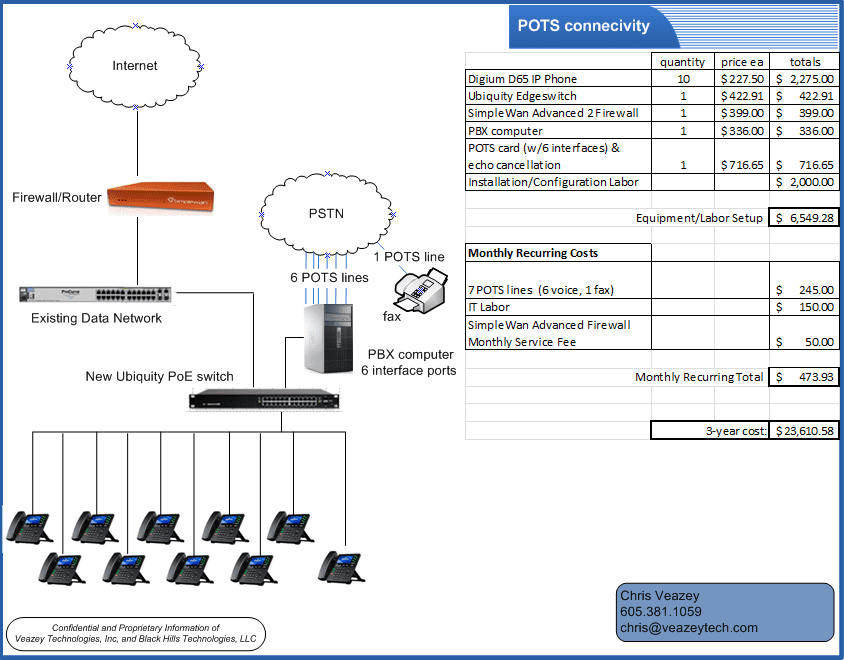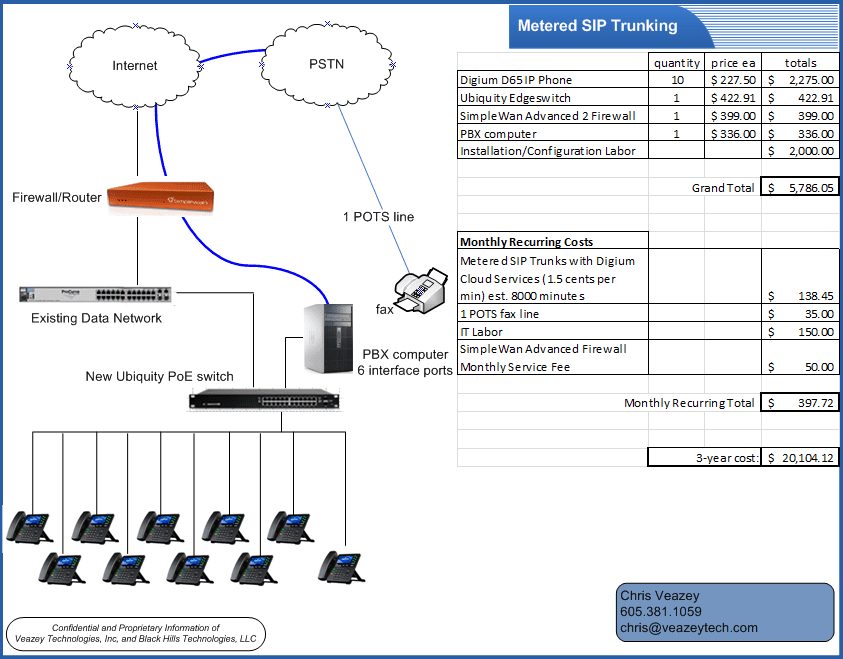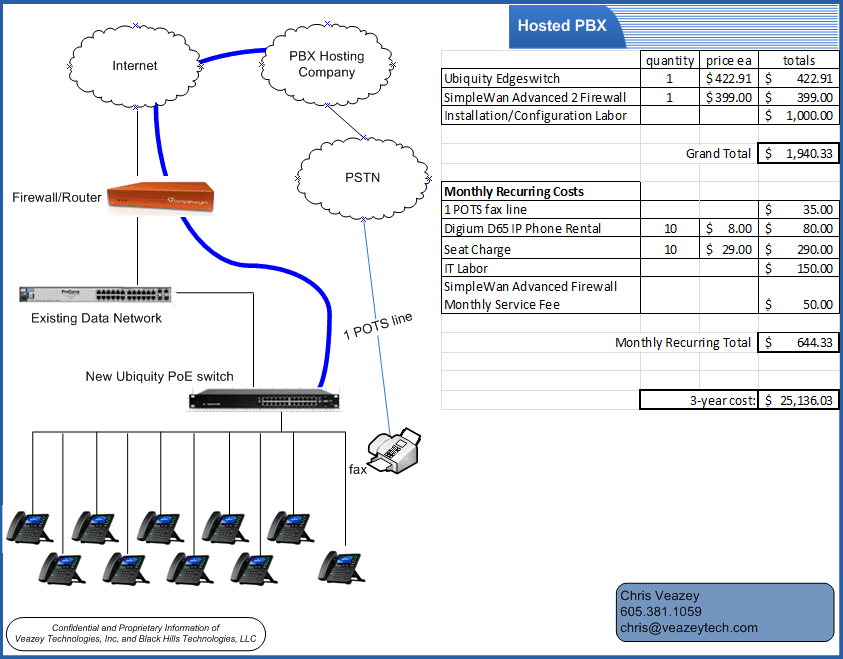I’m comparing the three year cost of ownership for a modern phone system that is connected to the public phone network (PSTN) in five different ways:
- Traditional Phone Lines (POTS)
- Metered SIP Trunks (VoIP)
- Hybrid (POTS/VoIP combo)
- Digital (ISDN PRI)
- Hosted (VoIP Phone system in the Cloud)
To keep each scenario as close to each other as possible, I’m using these assumptions: A new powered data switch, ten IP phones, a SimpleWan firewall taking advantage of its VoIP Quality of Service, estimated installation cost of a local IT company at $2000, and monthly recurring costs of local IT company at $150.

_
POTS Connectivity:
This phone system has analog hardware that connects to traditional phone lines. These phone lines are purchased from the phone company under different contract terms. Although they can possibly identify themselves as different phone numbers (Alternate Number Delivery,) they can only have one phone number assigned to each line. When deployed in a situation like this, they are normally built in a hunt group. The pilot phone number is your business’s main phone number. If that line is busy, it rolls to the next line. If line 2 is busy, it rolls to the third line, etc. If set in a circular hunt, the last line will roll to the first.

_
Metered SIP Trunking:
A “trunk” is a channel; a call path. It can have different called numbers to it and outbound calls can present themselves as different caller ID numbers. All that to say that a trunk is not limited to a single phone number. With a metered SIP trunk, it just means that you aren’t locked into buying a specific number of lines and paying for them each month. Instead, you are charged by the minute. In the case of Digium Cloud Services Metered SIP trunking, the rate is 1.5 cents per minute. Depending on your call volume, this can be more economical than paying for multiple trunks per month. (Other fees apply, of course, like 911 fees or fees for direct dial numbers, usually $1 per month per number.) In the example below, I’m estimating 8000 minutes per month….but I think that might be high, even for a 10-phone office.

_
Hybrid Deployment:
In this scenario, you have a combination of some phone lines AND Voice over IP. The last line of the POTS hunt group rolls over to the Voice over IP Metered SIP trunk. Another benefit is that you can have lots of Direct Inward Dial numbers that would go over the VoIP trunks…giving your individual team members their own numbers.

_
Digital:
In this example I look at a full 23-channel digital circuit, an ISDN PRI. It rides a T1 line from the phone company….23 voice trunks and a single data channel for signalling. These circuits are extremely reliable and have the benefit of allowing many different Direct Inward Dial numbers but for small offices, 23 lines is usually overkill. You might be able to negotiate with your phone company to buy partial channels (a fractional PRI.) For a full PRI circuit, you’re looking at $450 monthly.

_
Hosted PBX:
My final scenario comparison is a Hosted PBX. The phone system hardware in this case is “In The Cloud.” You either buy or lease the physical telephones from the hosting company and all your setup, moves, adds, changes take place with the hosting company or a portal they provide. Not as much up-front cost but if Internet goes down, so does your phone service.

